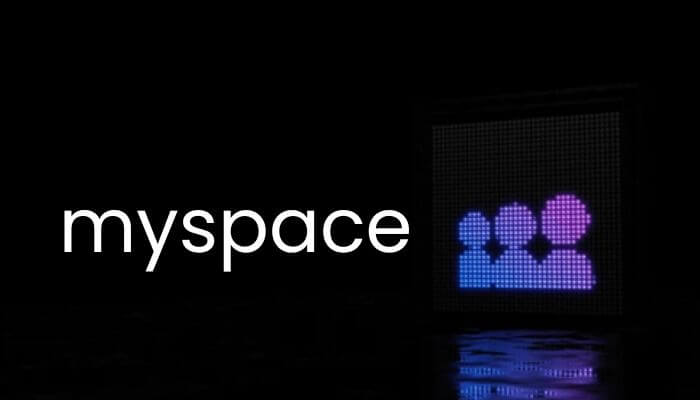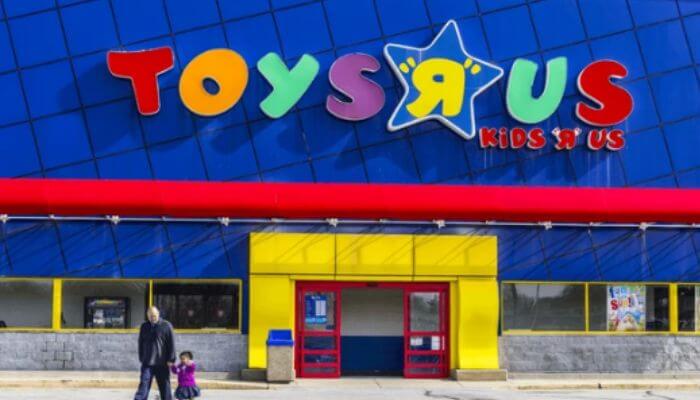MySpace was the king of social networks in the early 2000s. The custom profiles, music-sharing, and huge userbase made MySpace quickly a cultural phenomenon, providing a voice for millions of people to communicate and find one another. In 2006, it was more popular than Google and was the top website in the US.
However, within a few short years, MySpace lost its lead and was pushed aside by a fresh entrant into the social media world: Facebook. MySpace is no more than its age, a lesson about how even the most successful technology companies can degenerate if they fail to innovate and adapt to changing trends.
In this article, we will explore the meteoric rise and dramatic fall of MySpace, examining the key reasons behind its failure and the lessons that can be learned from its story.
Also Read: The Rise and Fall of Blockbuster: A Failure Story of Missed Opportunities and Market Shift
The Rise of MySpace: A Social Media Pioneer
MySpace was founded in 2003 by Tom Anderson and Chris DeWolfe, who responded to the rise of social networking applications such as Friendster. Users could build personal profiles, and connect with friends, upload pictures, and share music, and this was one of the best parts of the site. The music feature helped attract both independent artists and mainstream musicians, making it the go-to platform for discovering new music.
MySpace’s interface gave people to fully customize their profile with HTML and CSS giving them a high degree of creative control. They could change the background color, add animations, and add music tracks of their choice, which made it quite individual and unique when compared to its competitors.
By 2005, MySpace was multiplying rapidly, with millions of users. In the same year, Rupert Murdoch’s media empire News Corp acquired MySpace for $580 million. This purchase was considered a move to tap the growing strength of social media and for a while, it seemed like a brilliant move. It was a top-tier social network with over 100 million users and an estimated $12 billion valuation at the time.
Why MySpace Was So Popular: The Features That Made It Stand Out
Several factors contributed to MySpace’s popularity in its early years. These include:
1. Customization
One of MySpace’s big selling points was its freedom to let members fully customize their profiles. That level of personalization was not provided by other social networks at the time. Users could display their personality through their page design, music choices, and profile layout, fostering an immediate feeling of ownership.
2. Music Integration
MySpace was a key player in the music business because it enabled artists to communicate directly with their audiences. Especially for young and indie musicians, the way most musicians got noticed was through MySpace. The platform quickly proved to be a central source of music-discovery, and musicians such as Arctic Monkeys and Lily Allen owe a large portion of their early success to MySpace.
3. Social Connectivity
MySpace’s friend system allowed users in establishing a social network, maintaining connections with friends in real life, and meeting new people. Top Friends, bulletins, and comment boards allowed people to easily communicate and engage each other, providing an overall sense of community that helped users keep coming back.
MySpace, for a while, looked unstoppable. It was the world’s biggest social network and its reach extended far beyond the web to pop culture. But on the other side, cracks were emerging.
The Fall of MySpace: A Series of Missteps
Despite its initial success, MySpace’s downfall came rapidly. By 2008, Facebook had overtaken MySpace in terms of monthly users, and by 2011, MySpace had lost most of its user base. Several critical missteps contributed to MySpace’s decline:
1. Poor User Experience and Cluttered Interface
One of MySpace’s greatest assets its customization – but it became one of its weaknesses. Users’ ability to edit their profiles in intricate HTML and CSS made for chaotic and slow-loading pages that were difficult to navigate. Superficial graphics, auto-playing music, and excessive ads made for a chaotic user experience. Facebook, on the other hand, had a very clean minimalistic design that was less about customization and more about user experience.
The unstructured and inconsistent design of MySpace accounts repelled users, especially as Facebook’s minimalistic design began to more attractive.
2. Over-Monetization and Ad Invasion
When News Corp acquired MySpace, it was increasingly focused on advertising revenue. As a result, the platform became saturated with ads, many of which were intrusive and compromised the user experience. MySpace’s pages had been overrun with banners, popups, and auto-playing video ads, creating a frustrating experience for users.
Facebook also brought ads into the mix, though in a less uninhibited fashion. For consumers, Facebook valued the user experience more, while MySpace seemed to prioritize monetization over user satisfaction.
3. Lack of Innovation and Failure to Adapt
Perhaps the biggest reason for MySpace’s downfall was its failure to innovate and keep up with the fast-changing social media landscape. As Facebook expanded, it offered new platforms for interaction and content sharing such as News Feed and Photo Albums. Facebook opened its site to third-party developers who developed apps and games that further enhanced user engagement.
MySpace, however, was still basically stagnant. Its interface and core functionality never changed to keep up with the competition. While Facebook was constantly updating and building upon its content, MySpace’s leadership never saw innovation as essential to maintaining user loyalty. Consequently, people started migrating to Facebook which was more contemporary and easier to use.
4. Privacy Concerns
The privacy controls were another place Facebook excelled over MySpace. MySpace had options to make your profile public or private, but the interface was very crude, and a lot of users could not quite work out their privacy preferences. When more people worried about online privacy – and the parents of younger children – Facebook’s robust privacy features became attractive.
Facebook’s privacy options were more specific — it was possible to control who saw your posts, pictures, and personal information. It felt so safer and this was something that made Facebook more attractive – especially for the older generations and families – and MySpace had a hard time attracting new users with privacy issues.
Also Read: The Impact of Social Media on Students: How to Make the Most of It
The Rise of Facebook: How It Outpaced MySpace

As MySpace stumbled, Facebook used that opportunity to gain the social media landscape. Facebook started as a college student platform, which became popular with users the moment it was created by Mark Zuckerberg in 2004. By the late 2000s, Facebook’s explosive expansion had transformed it into the global social media platform in the world.
Several factors contributed to Facebook’s success over MySpace:
- Simplicity: Facebook offered a clean, simple interface that was easy to navigate. Users appreciated the consistent layout and lack of clutter compared to MySpace.
- Real Identity: Facebook encouraged users to sign up with their real names, which helped foster a sense of trust and authenticity on the platform. In contrast, MySpace allowed for anonymous or pseudonymous accounts, which often led to negative experiences such as cyberbullying and spam.
- Mobile Readiness: Facebook recognized the importance of mobile early on and invested heavily in developing a seamless mobile app experience. In contrast, the platform was slow to adapt to the mobile revolution, further alienating users.
As Facebook grew and evolved, MySpace struggled to keep up. By 2008, Facebook had overtaken MySpace in global users, and the gap between the two platforms continued to widen.
The Acquisition by Specific Media and Justin Timberlake
In 2011, News Corp sold MySpace to Specific Media for just $35 million, a slender fraction of its peak valuation of $12 billion. The deal was spearheaded by Justin Timberlake, who wanted to rebrand MySpace as a music and entertainment platform.
And even with these efforts, the platfom never recovered its former glory. It did enjoy limited success as a niche audience platform for musicians and followers but never competed with Facebook or other young social media networks such as Twitter and Instagram.
Key Lessons from the Failure of MySpace
The rise and fall of MySpace offer several important lessons for businesses and entrepreneurs:
1. Prioritize User Experience
One of the reasons MySpace did not work out was their lack of attention to user experience. Their messy ad-filled user interface drove people away; while Facebook’s sleek and minimalistic interface kept them interested. Companies are never allowed to forget the user when creating products and services.
2. Embrace Innovation
In the tech world, innovation is survival-critical. The platform never really had a creative way to stay in the social media landscape, while Facebook was continuously introduced new features to keep people interested. Enterprises must be flexible and innovative enough to stay on the cutting edge.
3. Balance Monetization with User Satisfaction
Over-reliance on advertising revenue alienated its users, as the site became cluttered with intrusive ads. While monetization is important, businesses must strike a balance between generating revenue and maintaining a positive user experience.
4. Adapt to Mobile
As mobile usage became more prevalent, the platform was slow to adapt, while Facebook embraced the mobile revolution. Today, businesses must ensure their platforms are optimized for mobile devices to remain competitive.
Conclusion:
MySpace’s experience is an excellent lesson in how even the best-performing enterprises will fail if they are not able to think differently and react to the changing market conditions. Despite its downfall, it paved the way for subsequent social media platforms, and its impact on the music industry remains a significant part of its legacy.
Finally, the popularity and failure of MySpace show how we need to be agile in a digital world that is changing at an increasing pace. The platform might no longer be king of the social network landscape, but its influence on internet culture and its lessons for the future of business and technology will not be forgotten.



